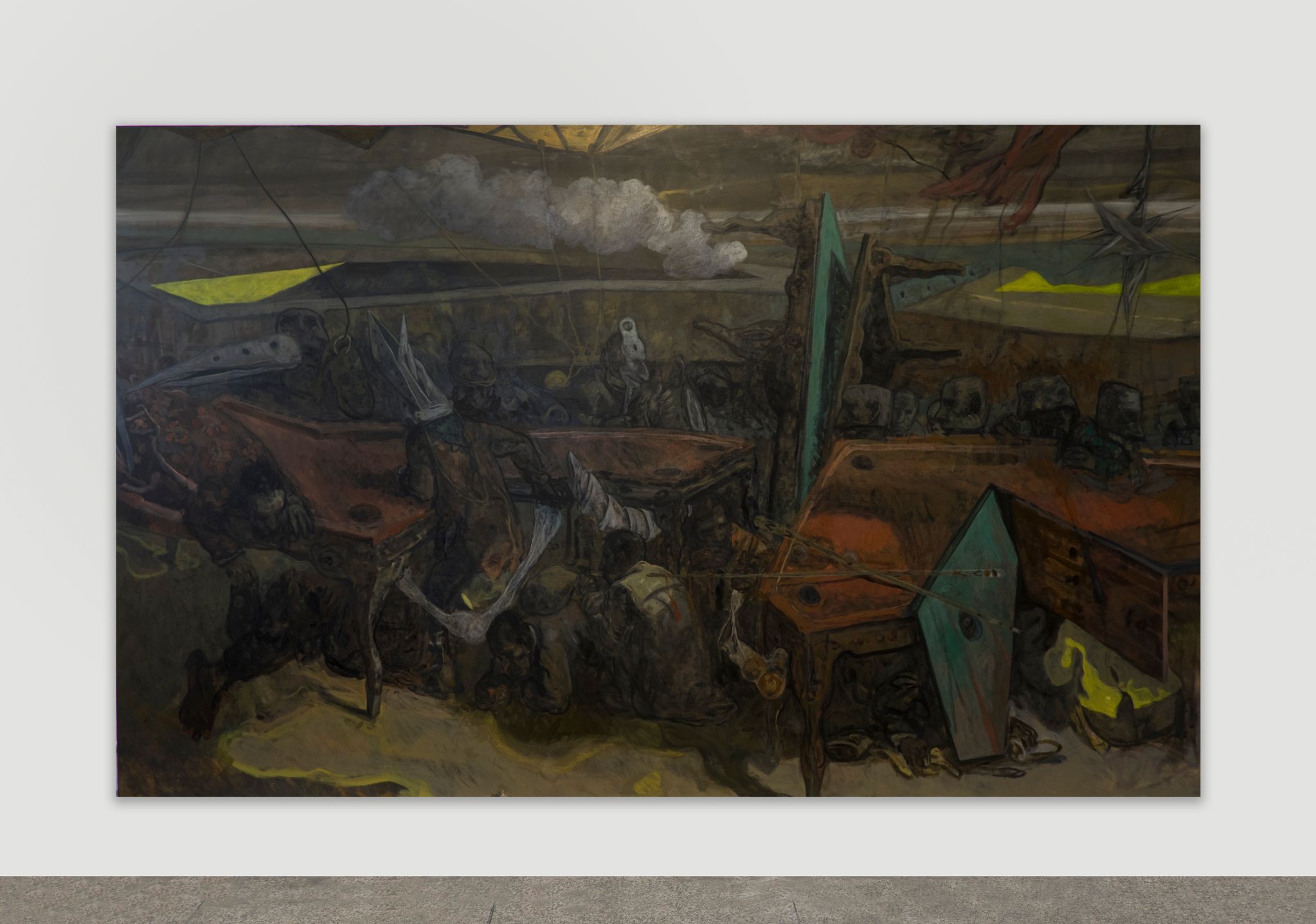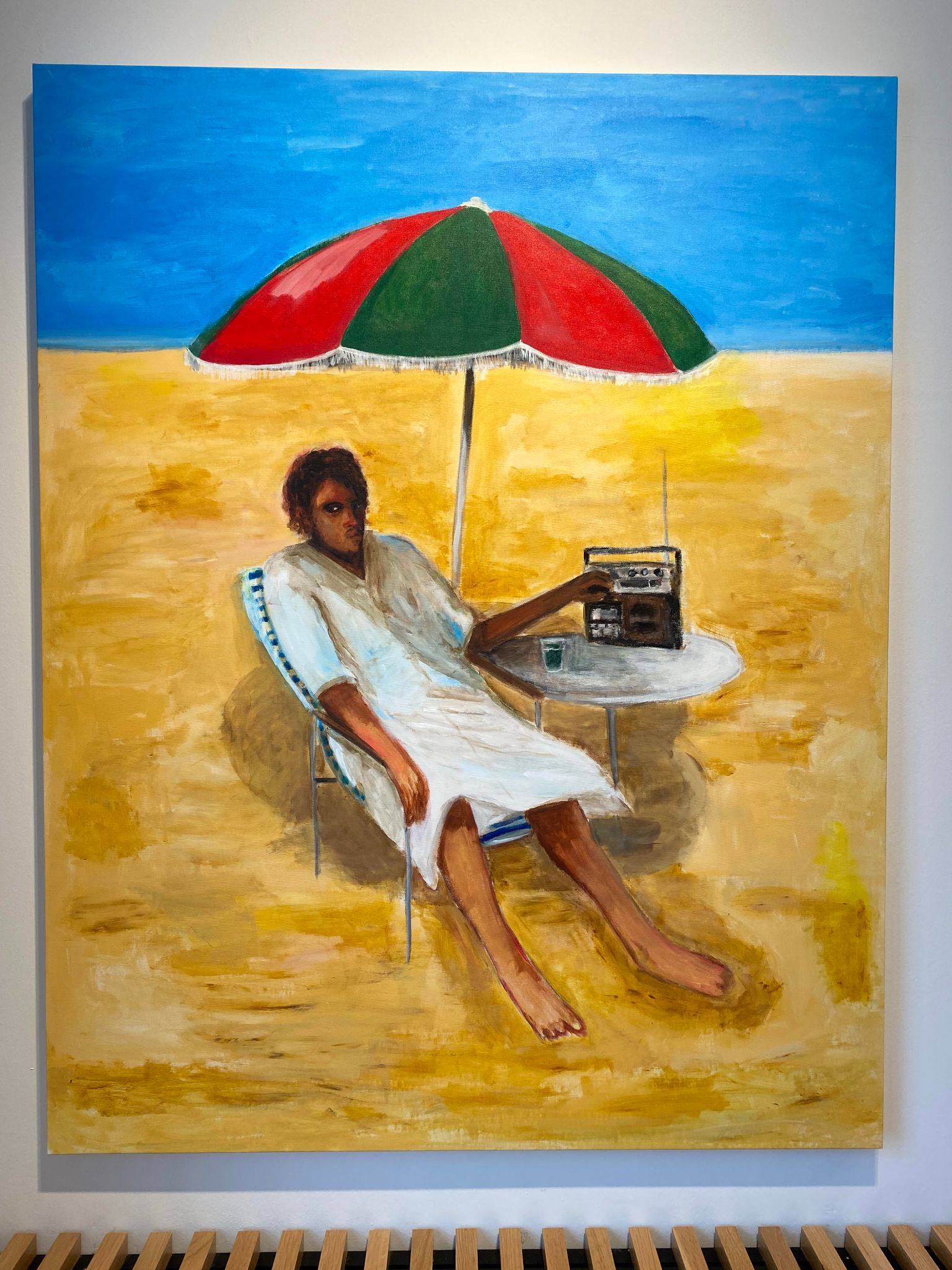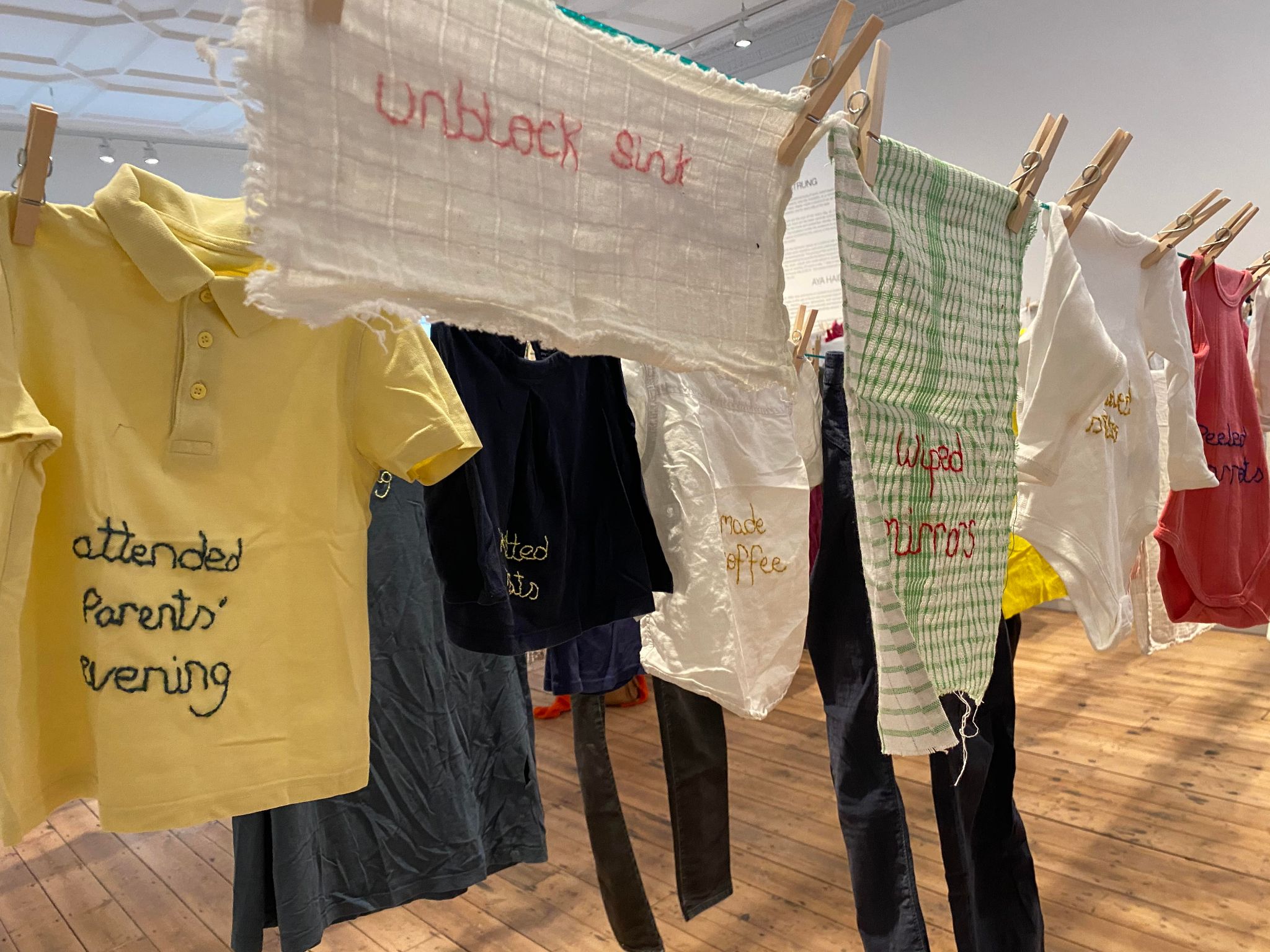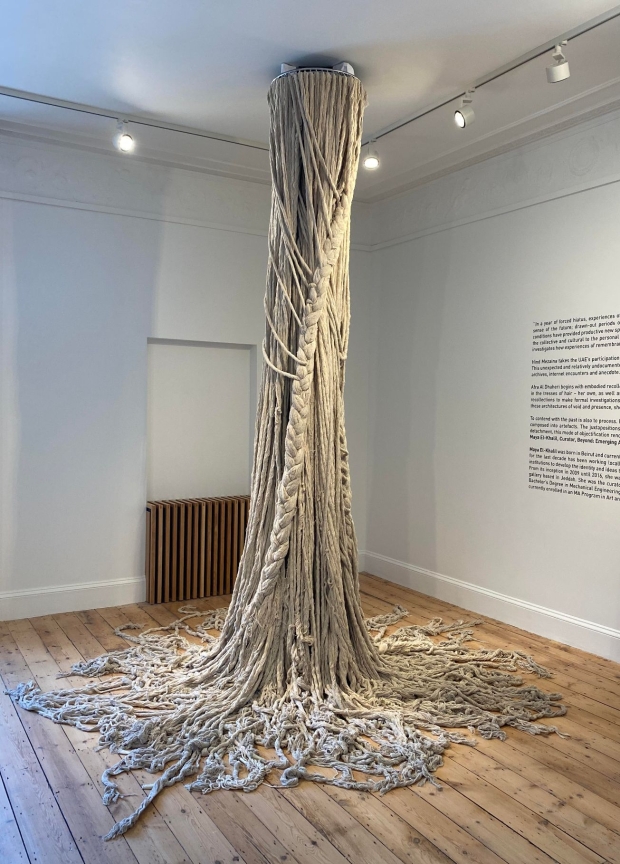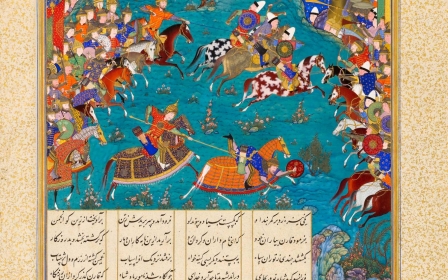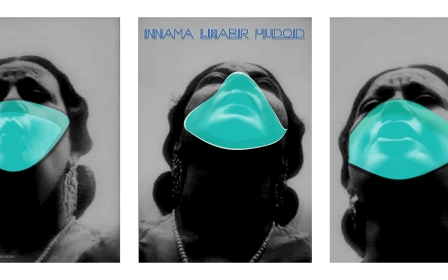Middle East art on show at new space as London emerges from lockdown
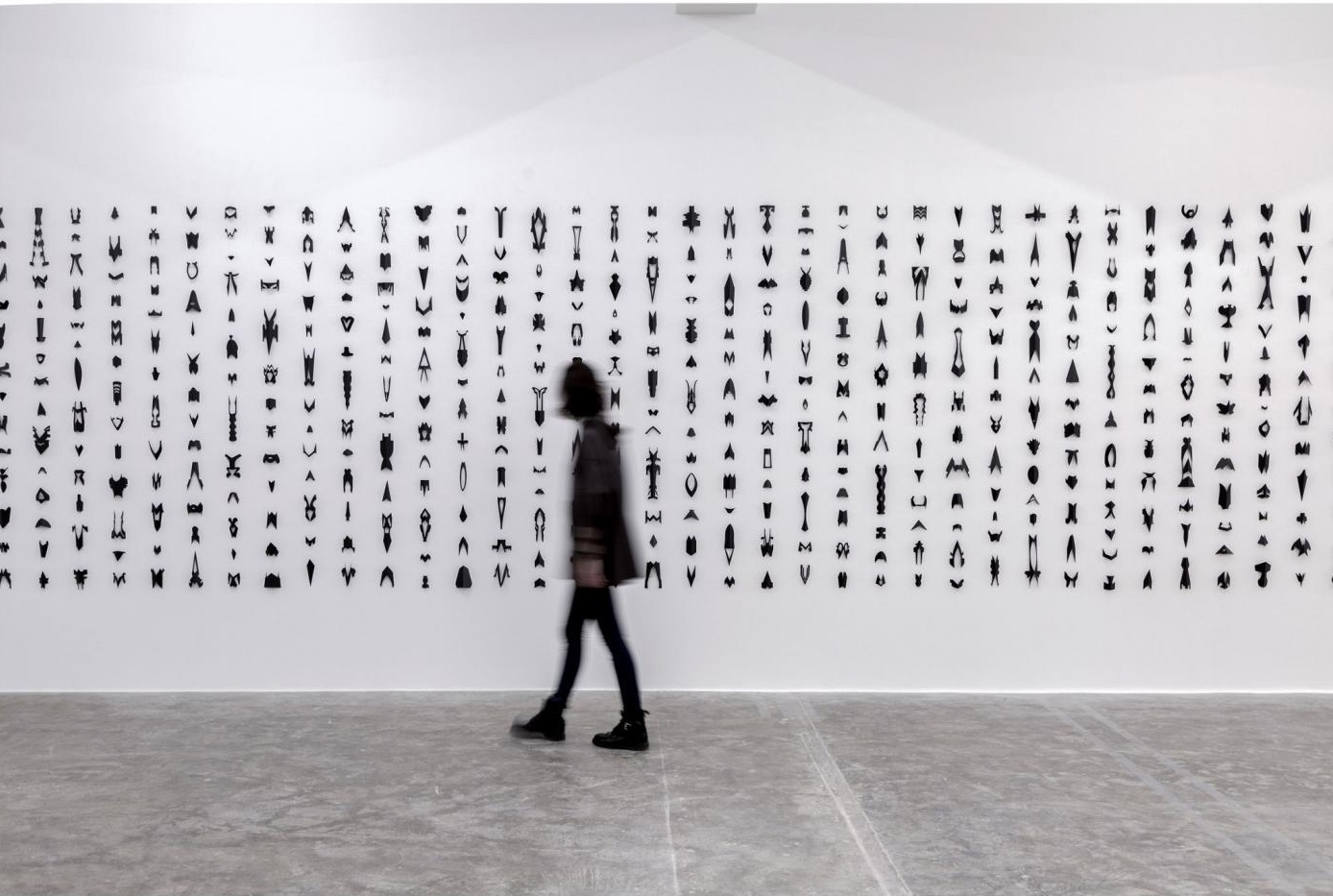
The paintings of Majid Fathizadeh are brooding and haunted. In the Iranian artist’s work Pool Table, a crowd of weirdly masked men crowd and crawl around pool tables that are upturned or misshapen, playing some anarchic game. In the dark landscape of his painting,Tendon, a directionless rabble of people is huddled in the hills overlooking a city that could be Tehran.
Fathizadeh’s paintings are on show internationally for the first time this week at Cromwell Place in London’s South Kensington, a new venue fashioned from interconnecting town houses close to the Victoria and Albert Museum, where member galleries can show their artists’ work in 15 exhibition spaces.
As the London art scene properly emerges from coronavirus lockdown, a group of galleries with strong ties to the Middle East have been showcasing their work, giving a snapshot of the current scene.
Painting features strongly among them, alongside powerful installation work confronting gender issues that range from a sculpture of giant hair constructed from rope to hanging lines of children’s clothes.
New MEE newsletter: Jerusalem Dispatch
Sign up to get the latest insights and analysis on Israel-Palestine, alongside Turkey Unpacked and other MEE newsletters
Born in 1977, Fathizadeh trained at Tehran University and remains based in Iran, but his work looks to inspiration from the European Old Masters, with works that carry powerful dark themes of chaos and conflict. “He is a serious painter which these days is very rare, for people to stick to their principles of painting,” said Salman Matinfar, founding director of the Ab-Anbar Gallery.
Ab-Anbar, which was founded in Tehran in 2014 but also exhibits artists internationally, is showing four Iranian artists at Cromwell Place. The work includes the first paintings by the well-known artist Timo Nasseri, in pieces inspired by the “dazzle” camouflage used for warships in World War I, but with the look of giant symmetrical insects.
Contemporary, global art
But none of the work at Ab-Anbar could be easily labelled Iranian or “Middle Eastern”, and that is the point: the artists are universal. “We are trying to do something you don’t usually see in Western institutions,” said Matinfar. “Because Western institutions always want to show something ‘Middle Eastern’, to show that this comes from that region. They want some pointers that these artists come from the Middle East.”
Men stare out blankly, angrily, watchfully, exposing the whites of their eyes in the paintings of Anuar Khalifi, showing with the Dubai-based gallery the Third Line at Cromwell Place. Based between Morocco and Spain, where he was born, Khalifi is a self-taught artist who drew constantly as a child.
In his painting Ghurba, a young man has a malevolent gaze, fiddling with the dial on his radio set, lounging back in his deck chair on yellow sand. In Na3Na3 a man in a white suit and fez stares blankly out from an armchair, as if in shock.
In Safi Safari another is dressed absurdly in a solar topee and yellow leather slippers, and a waistcoat that might be a life jacket. There is something dislocated and suggestive about these figures, which speak of stories from a world in flux.
While the art scene in London only began opening up in May, galleries in the United Arab Emirates mostly continued to operate, said William Lawrie, of the Lawrie Shabibi gallery, one of the Middle East’s most experienced gallerists.
“In the UAE, apart from wearing masks and limiting numbers of people in a space, it’s been open since July 2020. People have been coming to shows. Because people haven’t been able to travel, they have been supporting the local art scene.”
The gallery in the Cromwell Place exhibition is showing the work of the pioneering Emirati artist Mohamed Ahmed Ibrahim, from black-and-white paintings and papier-mache work to brightly coloured sculptures that resemble robotic animals, heavily inspired by his home in Khorfakkan on the Gulf of Oman, and the light and shapes of a place between the mountains and the sea.
'Invisible labour'
The British-Lebanese artist Aya Haidar confronts the coronavirus lockdown directly in her installation Highly Strung. Hosted by Saudi Arabia’s Athr Gallery, it sees a room hung with lines of domestic cloths and pieces of children’s clothing, each embroidered with a message recording the “invisible labour” done daily by the artist as a woman and mother during the pandemic.
“Paired socks”, “wiped tears”, “pulled drain hairs out” and “changed nappy” were just a few examples. They were made one a day, over 365 days.
The shifting status of women in Saudi society comes powerfully under the spotlight in the work of Saudi artist Manal AlDowayan, shown by the Isabelle Van Den Eynde Gallery.
In The Emerging, 30 black casts of womens’ disjointed legs and knees poke up from the floor, shapes that seem to have a life of their own.
They seem to be inching towards a wall sculpture, O Sister, whose interlocking petals are modelled like a desert rose, and printed with instructions from religious men determining women’s proper use of their bodies.
A falling mass of giant hair dominates the space in a show of three artists curated by the Abu Dhabi Art fair. Tasreeha (meaning a hairdo in Arabic) by Afra Al Dhaheri is a three-metre high piece that hung in her studio during lockdown.
Some of Dhaheri’s works use real hair; others, like Tasreeha, use rope treated as hair on a monumental scale, falling from braids into impossible tangles. Her interest is in hair’s journey from childhood into womanhood and the memories it carries, where it’s plaited, tidied, made presentable, and sometimes covered.
Paintings are the subject of a second Iranian gallery showing at Cromwell Place, +2 Gallery, founded in 2015 and part of the Dastan galleries in Tehran, a major player on the contemporary scene there.
Peybak is the “unified duo” of artists Babak Alebrahim Dehkordi and Peyman Barabadi, who trained and live and work in Tehran.
Their work is inspired by Persian miniature paintings mythology and poetry, including Attar of Nishanpur’s Conference of the Birds.
An imaginary world, Abrakan, meaning “small clouds”, features paintings on canvas and paper teeming with tiny silhouetted creatures.
Cromwell Place offers prime space to member art galleries in the heart of London's museum district, at a time when galleries and dealers, including those focused on the Middle East, are increasingly crowded out of central London premises by fashion, jewellery and other high-end shops. This week that model seemed to be working.
The exhibitions of artists at Cromwell Place, London, curated by +2 Gallery, Athr Gallery, Gallery Isabelle van den Eynde, and the Third Line end on 9 June 2021 . The exhibitions curated by Ab Anbar, Lawrie Shabibi, Abu Dhabi Art, and Tabari Artspace end on 13 June 2021. Exhibitions are free but access by prior booking only.
Middle East Eye delivers independent and unrivalled coverage and analysis of the Middle East, North Africa and beyond. To learn more about republishing this content and the associated fees, please fill out this form. More about MEE can be found here.


